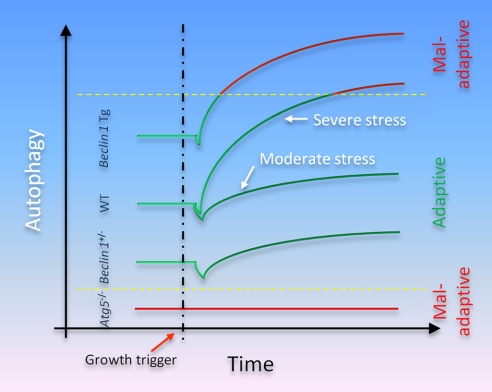FIGURE 2.
Model of the role(s) of autophagy in hypertensive heart disease. In the basal state, constitutive levels of autophagy are required for cell survival, especially in post-mitotic cells that must survive decades without replication. Near-total inactivation of autophagic activity is maladaptive, promoting cell death. Conversely, less drastic decreases (or conversely, increases) in autophagic activity are not associated with untoward events. In the setting of growth stimulation, both anabolic and catabolic processes are activated. During the initial phase, the former predominates, and cell growth ensues. In fact, some evidence suggests that the catabolic autophagic pathway may be transiently suppressed in early phases of growth. Ultimately, however, a new steady state emerges where levels of autophagic flux are increased. Depending on the strength of the growth stimulus (and the genetic context where autophagy is suppressed either completely or partially or amplified), the resulting autophagic activity is either adaptive or maladaptive. In some contexts, hypoxia may contribute to the induction of maladaptive autophagy, as well. WT, wild type; Tg, transgenic.

